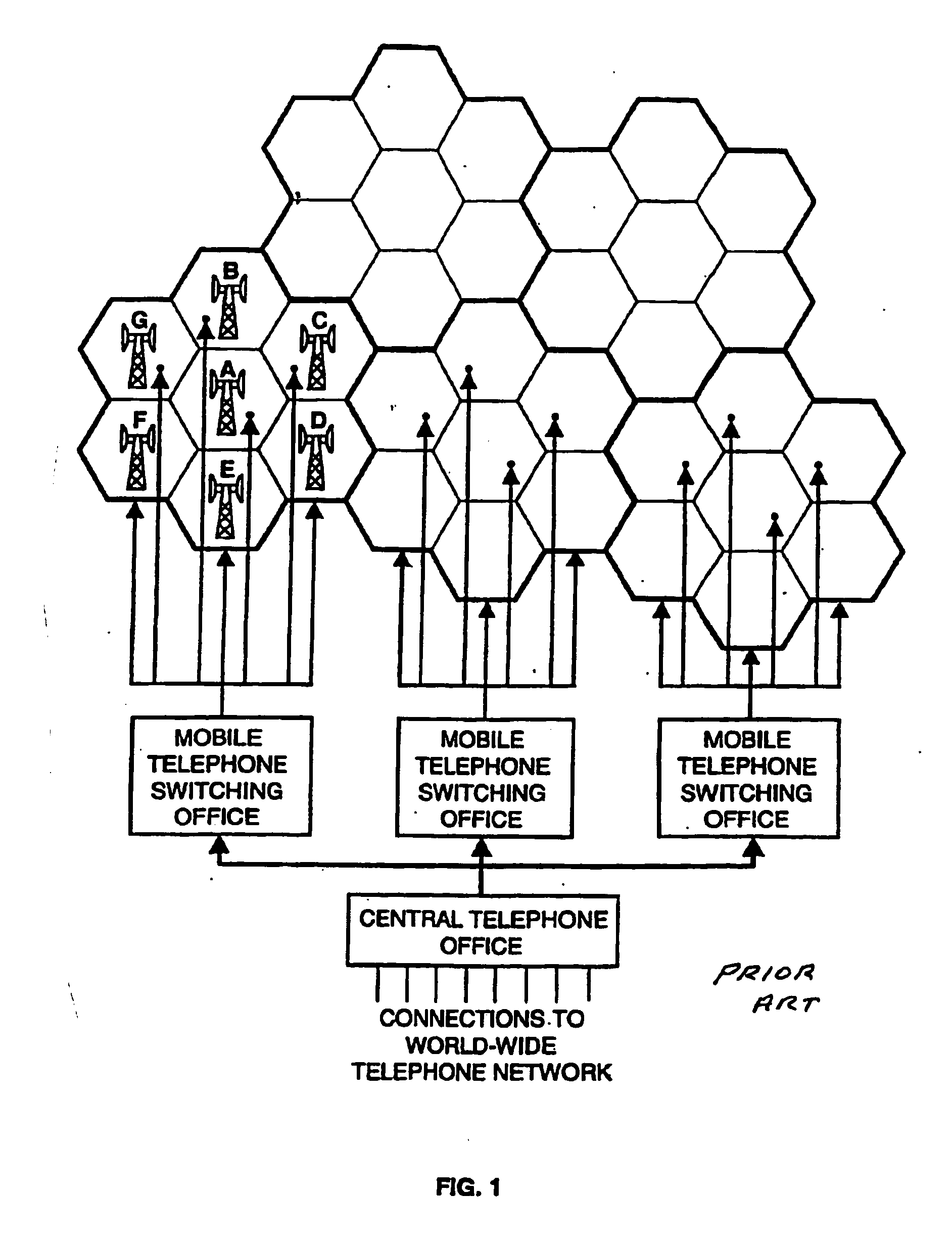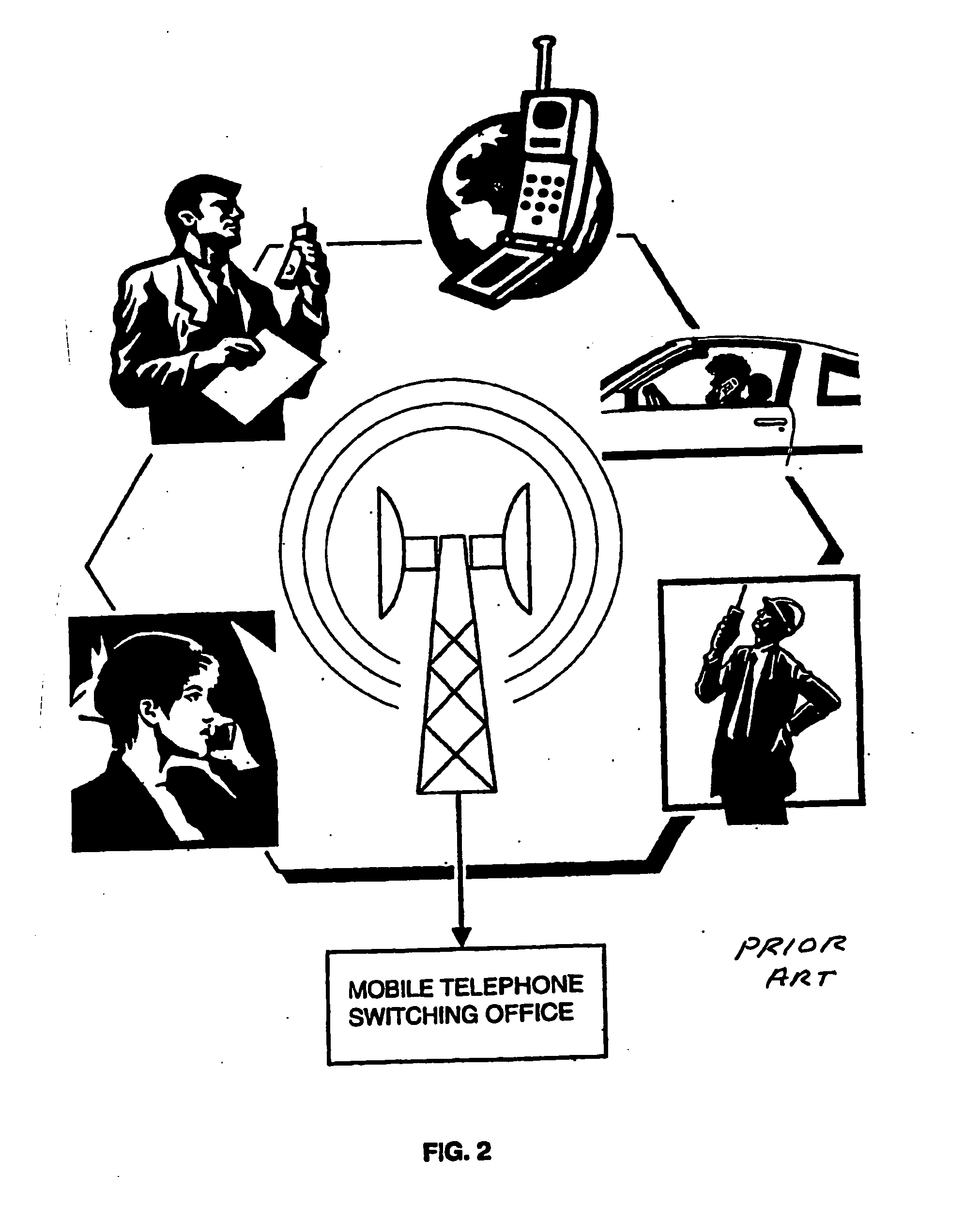Cellular systems with distributed antennas
a distributed antenna and cellular technology, applied in the field of cellular communication systems, can solve the problems of insufficient rationalization insufficient utilization of fiber optic trunk lines, so as to achieve efficient utilization of low-frequency wireless internet access bandwidth, efficient utilization of millimeter wave trunk lines, and efficient utilization of low-frequency bandwidth
- Summary
- Abstract
- Description
- Claims
- Application Information
AI Technical Summary
Benefits of technology
Problems solved by technology
Method used
Image
Examples
Embodiment Construction
Back-Haul and Front-Haul
[0031]In a first preferred of the present invention described in detail in this application millimeter wave transceivers are used both as links to connect base stations to remote cellular station, referred to as “front-haul” communication and also to connect the base stations to a point of presence in an optical fiber communication network, referred to as “back-haul”.
BRIEF DESCRIPTION OF THE DRAWINGS
[0032]FIG. 1 is a sketch showing a prior art cellular network.
[0033]FIG. 2 is a sketch showing features of a single prior art cell.
[0034]FIG. 3A is a sketch of a millimeter wave trunk line connecting cellular base stations.
[0035]FIG. 3B is a sketch of a millimeter wave trunk line connecting wireless internet access base stations.
[0036]FIG. 4A demonstrates up conversion from cell phone frequencies to trunk line frequencies.
[0037]FIG. 4B demonstrates up conversion from wireless internet access frequencies to trunk line frequencies
[0038]FIG. 5A demonstrates down conv...
PUM
 Login to View More
Login to View More Abstract
Description
Claims
Application Information
 Login to View More
Login to View More - R&D
- Intellectual Property
- Life Sciences
- Materials
- Tech Scout
- Unparalleled Data Quality
- Higher Quality Content
- 60% Fewer Hallucinations
Browse by: Latest US Patents, China's latest patents, Technical Efficacy Thesaurus, Application Domain, Technology Topic, Popular Technical Reports.
© 2025 PatSnap. All rights reserved.Legal|Privacy policy|Modern Slavery Act Transparency Statement|Sitemap|About US| Contact US: help@patsnap.com



